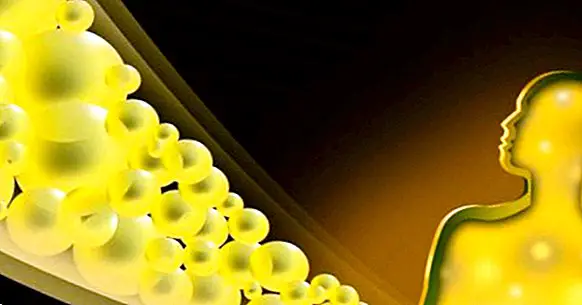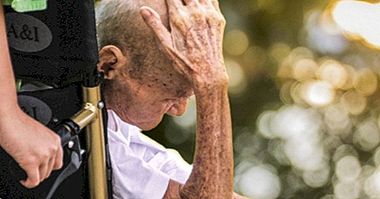High bilirubin (jaundice): causes, symptoms and treatment
Our body produces bilirubin naturally. This pigment fulfills important functions but if concentrated too much in the blood can cause jaundice and other symptoms .
In this article we will analyze what are the causes and symptoms of high bilirubin and what treatments are recommended for this alteration.
What is bilirubin?
Bilirubin is a yellow pigment that occurs as a result of the degeneration of hemoglobin , a protein present in red blood cells that carries oxygen between the lungs and other tissues.
Bilirubin acts mainly as a cellular antioxidant; This reduction of the oxidation processes causes the cells to wear less. However, the excessive presence of antioxidants can damage the cells.
This pigment is the cause of the color of the bruises and of the stool, when it is eliminated through the bile. It also explains the peculiar skin tone of people with jaundice.
Several beneficial properties are attributed to the moderately high levels of bilirubin in addition to the protection of the cells, among which the reduction of the risk of atherosclerosis and other cardiovascular diseases stands out.
Types of bilirubin
We can distinguish between two types of bilirubin: direct or conjugated and indirect or unconjugated. The sum of the values of both types is called "total bilirubin".
Indirect bilirubin is one that has not yet reached the liver, where it will become soluble in water, which will allow us to eliminate it through excretion.
For its part, direct bilirubin is produced in the liver from the indirect. It accumulates in the gallbladder and attaches to the bile, through which it will be eliminated later.
Normal and high levels
In healthy adults, normal total bilirubin values are below 1.2 mg / dl (milligrams per deciliter of blood), approximately.
Indirect bilirubin is concentrated in the blood at an approximate rate of 0.1 to 0.5 mg / dl, while healthy levels of direct bilirubin are between 0 and 0.3 mg / dl.
Different diseases can cause an increase in direct or indirect bilirubin levels in our body , causing various symptoms.
Symptoms of hyperbilirubinemia
Bilirubin concentrations greater than 2 or 2.5 mg / dl of blood can cause jaundice, a term that designates the yellow pigmentation of the mucosa, eyes and skin.
For jaundice to be visible on the skin it is usually necessary that the total bilirubin levels exceed 3 mg / dl , while the white part of the eyes may turn yellow from 2 mg / dl. Other common symptoms are darkening of the urine and, in contrast, the acquisition of a pale color from the stool.
We distinguish between conjugated or direct hyperbilirubinemia and unconjugated or indirect hyperbilirubinemia depending on whether the disease that causes it increases one or another type of bilirubin.
Causes of high bilirubin
Hyperbilirubinemia is usually caused by diseases of different types , but there are also other causes that may be sufficient for it to develop, such as chemotherapy and the use of antipsychotic drugs, among others.
Direct hyperbilirubinemia
The most frequent causes of increased levels of conjugated bilirubin are related to liver problems.
- Hepatitis : damage to liver cells due to inflammation can increase direct bilirubin levels.
- Hepatic cirrhosis : diseases such as alcoholism or some viruses can cause the cells of the liver to be replaced by scar tissue; severe cirrhosis causes jaundice.
- Gallstones and tumors in the pancreas they can block the gallbladder, making it difficult to eliminate bilirubin.
- Dubin Johnson and Rotor syndromes : benign hereditary diseases that have jaundice as the main symptom.
Indirect hyperbilirubinemia
Some of the most common causes of unconjugated hyperbilirubinemia are:
- Hemolytic anemia A disorder that causes red blood cells to degrade prematurely, increasing bilirubin and "bad cholesterol" levels.
- Gilbert's syndrome : benign hereditary disease that can cause mild jaundice during periods of stress or if there is general ill health.
- Crigler-Najjar syndrome A form of inherited jaundice that can cause brain damage to babies born with it.
Treatment of jaundice
The treatment of jaundice depends on the disease due to the increase in bilirubin.In general, jaundice is cured by strengthening the liver, since many of its causes are determined by liver disorders.
In cases of gallbladder obstruction, a surgical operation is usually required . The treatment of the other diseases that cause hyperbilirubinemia is usually carried out by medications.
Beyond these assumptions, mild jaundice does not usually require treatment in adults. If it causes itching, it can be reduced by using cholestyramine, a medication that helps eliminate bilirubin.
In newborn babies, where high levels of bilirubin are common and these may be somewhat more worrying, jaundice is treated with exchange transfusion and light therapy.
Likewise, drink plenty of water, eat fruits and vegetables and limit the consumption of saturated fats and refined sugars they are natural methods to reduce the symptoms of high bilirubin.




















